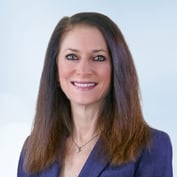For eight years, financial advisor Bruce G. Allen profited from a successful-enough independent practice catering to high-net-worth individuals and families in Denver. But after staunchly surviving the 2008-09 financial crisis, the former RBC Dain Rauscher FA was all ready to embark on a rigorous growth program — only problem was, he didn’t know how to do that.
Enter: Growth Accelerator, a comprehensive service offered by his broker-dealer Nation’s Financial Group’s clearing firm. Allen has gone through the vigorous months-long regimen from First Clearing Correspondent Services, a Wells Fargo affiliate, not once but three times since 2009. To say that it’s been life-changing for the 48-year-old FA is putting it mildly.
“It was a transformative, transmogrifying experience. I essentially tore down my practice and reconstructed it. I changed everything. Before, I never knew what clients expected of me, and I didn’t know what to expect of them. Today it’s all very clear: We now function as their sole financial advisor and personal CFO. If someone isn’t using us for that, we probably should be making a change,” says the 27-year EF Hutton-trained advisor.
Solid proof of results is in the numbers: pre-Growth Accelerator, Bruce G. Allen Investments managed under $70 million in client assets. Today, that AUM totals more than $115 million.
The most unusual, and likely most valuable, piece of the program was one-on-one coaching from an “accountability manager” specifically assigned to the FA. The two held consistent phone meetings and even had occasional face-time.
First Clearing, based in St. Louis, was perhaps unique in the dynamic, competitive clearing business in appointing dedicated growth consultants to work one-on-one with broker-dealer advisors. Still, nowadays it is all the rage for clearing firms to provide consultants to help BD clients and their FAs grow.
Indeed, clearers are serving up teams of wealth management consultants, portfolio management consultants, transition consultants and compliance consultants. Many travel the country regularly to advise broker-dealers and advisors on how to achieve growth through boosting efficiency and productivity.
Whether helping to develop BDs organically by deepening advisor-client relationships — as does First Clearing with Growth Accelerator — or through recruiting efforts, clearing firms are stepping up to broaden the scope of services they offer to bring clients value.
“For us to survive and prosper, there’s a direct alignment with our ability to help our firms survive and prosper,” says William Coppel, First Clearing’s chief client growth officer. “The change in the industry’s dynamics requires introducing firms to shift their deployment of resources and assets away from the notion of doing it themselves to choosing partners that will empower them to grow in what’s considered the most competitive environment in the history of our business.”
At RBC Correspondent Services, wealth management consultants help clients’ advisors become more efficient. The consultants this year are putting up a dozen-plus workshops nationwide packed with actionable ideas to help FAs deliver advice better and manage their practices more wisely. RBC consultants also hold formal practice-management coaching with group meetings around the country focused on improving eight core FA competencies.
Pershing, an affiliate of BNY Mellon and, with 1,500 clients, the largest clearing firm, has been beefing up the number of its broker-dealer one-on-one consulting meetings. Much time is spent addressing the critical issue of profitability.
 “We know the broker-dealer profitability model is under more strain today given the difficult economic environment, market volatility and low interest rates,” says Jim Crowley, Pershing managing director, based in Jersey City, N.J. “So we’re talking to [firms] about ways to grow their fee income and how they can monetize hard-to-borrow securities through a fully paid lending program. We’ve tried to unlock some of the value of the assets they hold and come up with new ways for them to drive more income to their top line.”
“We know the broker-dealer profitability model is under more strain today given the difficult economic environment, market volatility and low interest rates,” says Jim Crowley, Pershing managing director, based in Jersey City, N.J. “So we’re talking to [firms] about ways to grow their fee income and how they can monetize hard-to-borrow securities through a fully paid lending program. We’ve tried to unlock some of the value of the assets they hold and come up with new ways for them to drive more income to their top line.”
Pershing isn’t alone in that effort. Much of the entire financial services industry is up for more opportunities to offset reduced income resulting from low interest rates.
“It’s putting significant pressure on many broker-dealers to reevaluate a business model that might have been highly dependent on [interest income],” notes David Akellian, executive vice president and head of LPL Financial’s Custom Clearing Services, in San Diego. “The thing we can do to help is make available platforms and products that generate income that isn’t driven by the net interest side. That’s continued use of advisory products, which today seem to be winners.”
Custom Clearing provides its biggest client, AXA Advisors — with 5,000 advisors nationwide — the services of portfolio management consultants. This group of LPL employees spends time on the road identifying new opportunities for the company’s FAs.
“The consultant goes through the advisor’s book of business in a highly automated way and marries client objectives with the appropriate advisor business model,” Akellian says. For example, if a client’s investment activity level is reduced, the consultant may suggest that the FA take a different advisory approach.
This past February, AXA renewed its five-year clearing agreement with LPL. Concentrating chiefly on the insurance arena since its 2007 inception, Custom Clearing is now reequipping some of its products “to be more appealing to additional customer segments,” according to Akellian.
National Financial, a unit of Fidelity Investments, with about 300 correspondents, has a consulting practice of experts specializing in the brokerage space, which it dispatches, on behalf of clients, on “problem-solving missions” concerning growth and efficiency, says Sanjiv Mirchandani, National Financial’s president, based in Boston.
“Greater productivity leads to business growth because there’s a very direct correlation between productivity and production. With greater efficiency, advisors will have more time to bring in more clients, as well as more assets from existing clients. When we help our customers grow,” Mirchandani says, “we process more trades and custody more assets. So everybody wins. But it all starts with a successful correspondent.”
First Clearing, with about 100 clients, came to FA consulting early in the game, having launched Growth Accelerator in 2007.
The multipronged program aims to take advisors to the next level in client relationships and productivity.








 March 26, 2012 at 08:00 PM
March 26, 2012 at 08:00 PM











 Recruiting Tools
Recruiting Tools